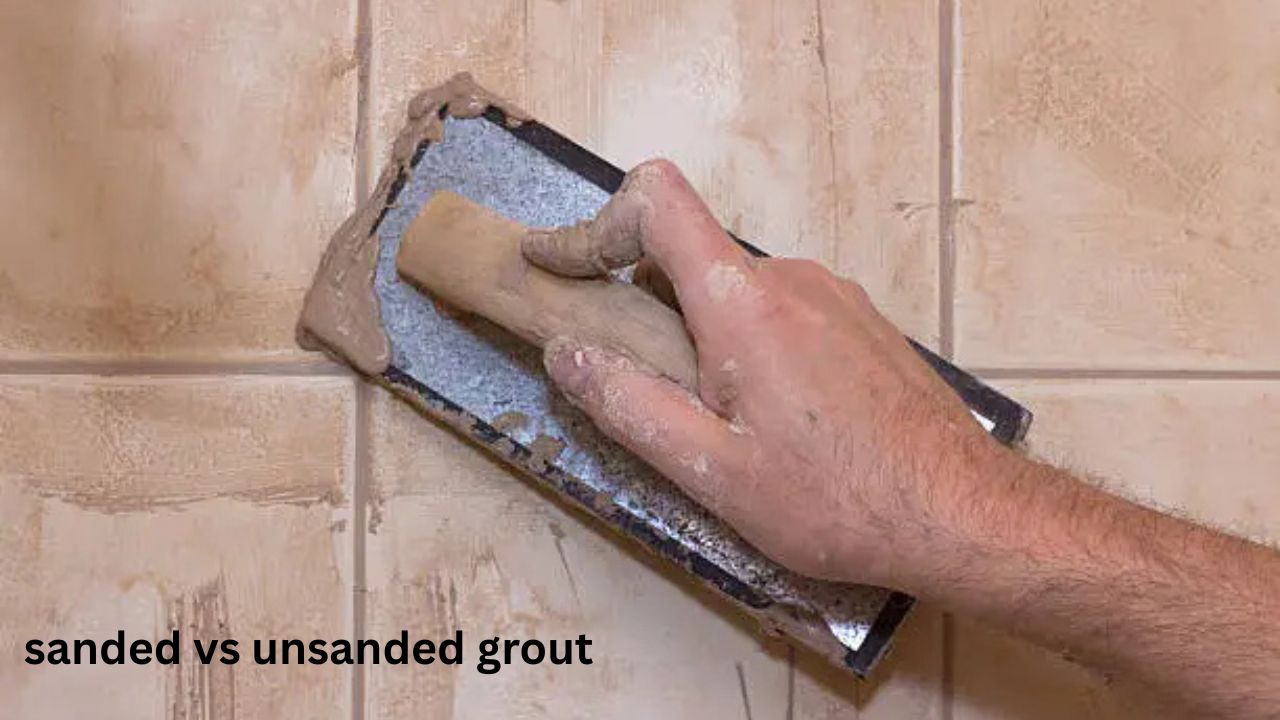Have you ever stood in the tile aisle, staring at two buckets labeled c, wondering which one to pick? You’re not alone. It’s one of the most common questions people face when tiling their bathroom, kitchen, or floor. At first glance, they sound almost identical, but choosing the wrong one can lead to cracked grout lines, scratched tiles, or even water leaks later on.
What Is Grout, Anyway?
Before we dive into sanded grout vs unsanded grout, let’s quickly talk about what grout actually does.
Grout is that stuff you see filling the spaces between your tiles. Think of it as the glue that makes your tile job look complete and keeps everything locked in place. Without it, dirt, water, and grime would slip between tiles, making your surfaces messy and weak.
But not all grouts are the same — and that’s where the whole sanded vs unsanded grout debate begins.
What Is Sanded Grout?
Sanded grout is the rough-and-tough option of the two. It’s made with cement, water, and—you guessed it—sand. The sand gives it extra strength and prevents the grout from shrinking as it dries.
Because of that, sanded grout is the go-to choice for floors, large tiles, and wide grout lines (usually 1/8 inch or more).
Imagine sand as tiny soldiers that hold the grout together, helping it resist cracking when people walk on the tiles. This makes it perfect for heavy-traffic areas like hallways, kitchens, and living rooms.
Here’s the golden rule:
If your grout line is 1/8 inch or wider, go for sanded grout vs unsanded grout.
It’s also more affordable, easy to find, and comes in various colors to match your tiles.
When to Use Sanded Grout vs Unsanded Grout
Okay, so where should you actually use sanded grout vs unsanded grout?
- Floors: Always use sanded grout for floors. It’s durable and won’t crack under pressure.
- Countertops and backsplashes: Use sanded grout vs unsanded grout backsplash depending on your tile size. For small gaps or glossy tiles, unsanded might be better.
- Showers: It depends on whether you’re doing the walls or floor — we’ll get into that in a second!
The main rule of thumb?
If you can feel the gap between your tiles, sanded is your best bet. If you barely see the gap, unsanded wins.
What Is Unsanded Grout?
Now let’s talk about its smoother cousin — unsanded grout (sometimes called non-sanded grout).
Unlike sanded grout, this one doesn’t contain sand particles. That means it’s smoother, creamier, and easier to spread on delicate tiles like glass, marble, or polished stone.
It’s the gentler option — it won’t scratch shiny or fragile surfaces. That’s why you’ll often see it recommended in guides about sanded vs unsanded grout for shower walls or sanded vs unsanded grout backsplash projects.
If your grout joints are less than 1/8 inch, choose unsanded grout. It’s ideal for narrow joints and vertical surfaces.
Sanded vs Unsanded Grout for Shower
Ah, the famous question: sanded vs unsanded grout for shower — which is better?
Here’s the deal:
- For shower walls, where the tile joints are narrow and surfaces are often glossy (like glass or ceramic), go for unsanded grout. It sticks better to vertical tiles and avoids scratches.
- For shower floors, which face constant foot pressure, sanded grout vs unsanded grout showers always wins. It’s stronger, lasts longer, and won’t wash away easily.
So, think of it like this — unsanded for the walls, sanded for the floor. Easy!
Sanded vs Unsanded Grout for Floor
When it comes to flooring, the choice is crystal clear.
For floors, you’ll want sanded vs unsanded grout for floor, because sanded is tougher and can handle pressure, foot traffic, and movement.
Unsanded grout might crack under the weight of furniture or people walking on it daily. So if you’re redoing your bathroom or kitchen floor, go with sanded grout vs unsanded every single time.
Sanded vs Unsanded Grout for Backsplash
Here’s where things get interesting.
If you’re working on a backsplash, your choice depends on your tiles.
For ceramic or porcelain tiles with visible gaps, sanded vs unsanded grout for backsplash — sanded grout is fine. But for glass, marble, or delicate tiles, choose unsanded grout vs sanded grout. It’ll give you a smooth finish without scratches.
And if you’re using a brand like Mapei sanded vs unsanded grout, check the label — they often include mix ratios and line width suggestions to help you make the perfect pick.
The Real Difference Between Sanded and Unsanded Grout
If you were to touch them side by side, you’d instantly feel the difference.
| Feature | Sanded Grout | Unsanded Grout |
|---|---|---|
| Texture | Gritty (contains sand) | Smooth and creamy |
| Best for | Floors, large tiles | Walls, small joints |
| Joint size | 1/8 inch or more | Less than 1/8 inch |
| Durability | Strong and resistant | Softer, can shrink |
| Surface type | Rough tiles | Glossy or delicate tiles |
| Cost | Cheaper | Slightly more expensive |
So, if your tiles are big and your gaps wide, sanded grout is your hero. If your tiles are small and shiny, unsanded grout is the star.
Common Mistakes People Make
Even though sanded grout vs unsanded grout showers sounds simple, many DIYers get it wrong. Let’s make sure you don’t.
- Using sanded grout on glass tiles — big no-no! It can leave scratches you’ll regret forever.
- Using unsanded grout on wide joints — it might crack or fall out after drying.
- Not sealing the grout — both types need sealing to prevent stains and mold.
- Mixing consistency wrong — too much water weakens the grout; too little makes it hard to spread.
Tile Grout Sanded vs Unsanded — Which Should You Choose?
Still confused? Let’s make it simple.
Ask yourself these 3 questions:
- Are your grout lines narrower than 1/8 inch?
→ Go with unsanded grout vs sanded grout. - Are your tiles textured or large?
→ Pick sand grout vs unsanded grout. - Is your project a shower floor or backsplash?
→ Use both! Sanded for the floor, unsanded for the wall.
Why Choosing the Right Grout Matters
You might think grout is just filler, but it’s actually your tiles’ best friend. The right grout prevents:
- Water seeping under your tiles
- Mold growth
- Tile movement and cracking
That’s why choosing correctly between grout sanded vs unsanded can literally make or break your tile job.
Plus, the right grout enhances the beauty of your space. It’s like the frame around a picture — it might not be the star, but it makes the star shine brighter.
Final Thoughts on Sanded vs Unsanded Grout
To sum it all up, the sanded vs unsanded grout choice comes down to just a few simple things:
- Joint size (big or small?)
- Tile type (delicate or tough?)
- Location (floor, wall, or shower?)
If you remember these three, you’ll never make a grout mistake again.
Choosing between sanded vs unsanded tile grout might feel tricky at first, but once you understand it, it’s simple:
Sanded grout = stronger, rougher, great for big joints and floors.
Unsanded grout = smoother, gentler, perfect for small joints and shiny tiles.
So next time you’re at the store comparing grout sanded vs unsanded backsplash or checking Mapei sanded vs unsanded grout options, you’ll smile confidently — because now you know exactly what to do.



